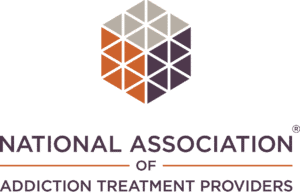The Interplay Between LGBTQ+ and Addiction: A Journey Towards Empathy and Support
In the vibrant tapestry of human diversity, the LGBTQ+ community represents a multitude of identities and experiences. As we celebrate Pride Month, it is crucial to recognize and understand the challenges faced by this community, particularly the link between LGBTQ+ individuals and addiction. This article aims to shed light on this complex issue, fostering empathy, raising awareness, and providing a foundation for support. By acknowledging these struggles and promoting inclusivity, we can create a safer and more inclusive society for all.
The Intersection of LGBTQ+ Identity and Addiction
LGBTQ+ individuals often face unique stressors and discrimination, which can contribute to higher rates of addiction. The journey of self-discovery, the process of coming out, and societal prejudice can lead to emotional distress and isolation. These factors, combined with the lack of acceptance from family, friends, and communities, can drive some individuals to turn to substances as a means of coping.
Mental Health Disparities and Substance Use
- Prevalence of Mental Health Disorders: LGBTQ+ individuals experience disproportionately higher rates of mental health disorders compared to the general population. Anxiety, depression, post-traumatic stress disorder (PTSD), and suicidal ideation are among the challenges faced. Substance use can often serve as a self-medication method, temporarily alleviating emotional pain or providing an escape from daily struggles.
- Minority Stress: The concept of minority stress, coined by psychologist Ilan Meyer, highlights the chronic stress experienced by marginalized groups due to societal discrimination and prejudice. LGBTQ+ individuals may face rejection, bullying, and harassment, leading to internalized homophobia or transphobia. This ongoing stress contributes to an increased risk of developing addictive behaviors.
- Barriers to Mental Health Services: The stigma surrounding mental health within the LGBTQ+ community can prevent individuals from seeking the help they need. Fear of judgment, discrimination, or a lack of culturally competent care may discourage individuals from accessing appropriate support systems. This further perpetuates the cycle of substance abuse as a coping mechanism.
Nurturing Supportive Environments
- Cultivating Acceptance: Creating inclusive communities and fostering acceptance within families, schools, and workplaces is crucial. Encouraging open dialogue, promoting education about LGBTQ+ identities, and dismantling stereotypes can help reduce the stigma associated with being LGBTQ+. Acceptance plays a pivotal role in preventing substance abuse and supporting those in recovery.
- Accessible Mental Health Services: It is imperative to ensure that mental health services are easily accessible and culturally competent for LGBTQ+ individuals. Healthcare professionals and therapists should undergo training to develop an understanding of the unique challenges faced by this community. Creating safe spaces for open and honest conversations can encourage individuals to seek the help they deserve.
- Peer Support and Community Organizations: LGBTQ+-specific support groups and community organizations can provide a sense of belonging, understanding, and empowerment. Connecting with peers who share similar experiences can help combat feelings of isolation and provide invaluable support during recovery journeys.
As we celebrate Pride Month, let us remember that the LGBTQ+ community is not immune to the challenges of addiction. By acknowledging the interplay between LGBTQ+ identity and substance abuse, we can work towards fostering empathy, raising awareness, and creating supportive environments. Let us be champions of inclusivity, working together to dismantle stigma and provide the necessary resources for mental health support. By doing so, we can ensure that every individual within the LGBTQ+ community feels seen, heard, and valued and that no one feels the need to turn to substances as a means of coping.
If you or someone you know is struggling with mental health issues, please reach out to us. Our trained professionals are here to provide a safe and affirming space for LGBTQ+ teens to explore their emotions, seek guidance, and receive the support they need. Remember, you are not alone, and asking for help is a sign of strength. Together, let us pledge to be advocates for change. Educate yourself, support LGBTQ+ organizations, and reach out to those who may be struggling









